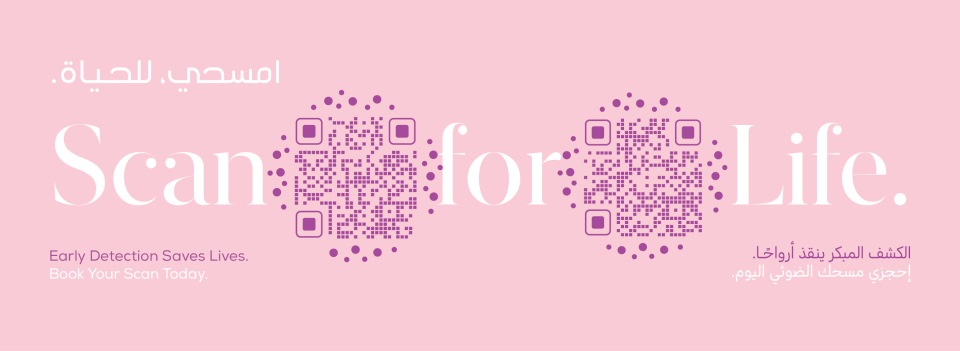Breast cancer is one of the most common cancers affecting women globally. The good news is that when detected early, it can be treated successfully. Early detection plays a vital role in improving survival rates, which is why it’s important for every woman to know the signs and symptoms of breast cancer and stay vigilant about her breast health.
Why Early Detection Matters
Breast cancer doesn’t usually cause pain or noticeable symptoms in its earliest stages, making regular screening and awareness crucial. When caught early, breast cancer treatment is often more effective and less invasive, with higher survival rates. That’s why self-awareness and routine medical checkups are key to catching breast cancer before it spreads.
Early Symptoms of Breast Cancer to Watch For
Breast cancer can present itself in a variety of ways. It’s important to know your body and recognize changes. Here are some common signs that may indicate early breast cancer:
1. Lump or Mass in the Breast:
One of the most common symptoms of breast cancer is the presence of a lump or mass in the breast. This mass is often hard and painless, but in some cases, it can feel tender or soft. Not all lumps are cancerous, but if you find one, it’s critical to consult your doctor for further evaluation.
2. Changes in Breast Size or Shape:
Noticeable changes in the size or shape of one breast compared to the other can be an early indicator of breast cancer. Sudden swelling, shrinkage, or asymmetry should not be ignored.
3. Skin Changes on the Breast:
Breast cancer can sometimes cause changes to the skin covering the breast, including:
- Dimpling or a texture resembling an orange peel.
- Redness or a rash that doesn’t go away.
- Thickening or swelling in the breast.
These changes may be subtle, but they’re important to discuss with your healthcare provider.
4. Nipple Changes:
Nipple changes are another potential warning sign of breast cancer. Keep an eye out for:
- Inverted or retracted nipples (when the nipple turns inward).
- Discharge from the nipple, especially if it’s bloody or occurs without squeezing.
- Scaling, peeling, or flaking skin around the nipple.
While some nipple changes can be linked to hormonal shifts, they could also signal underlying issues like breast cancer.
5. Unexplained Breast Pain:
While breast pain is more commonly associated with hormonal changes, persistent or unusual pain in one area of the breast that doesn’t go away with your menstrual cycle could be a sign of something more serious.
6. Lumps in the Armpit:
Breast cancer can spread to nearby lymph nodes, including those in the armpit area. If you notice any unusual swelling or lumps in your armpit, it’s important to bring this to your doctor’s attention.
How to Detect Breast Cancer Early
There are several steps you can take to ensure breast cancer is detected at its earliest and most treatable stage:
1. Perform Regular Breast Self-Exams
Knowing what’s normal for your breasts can help you detect changes early. A breast self-exam should be done monthly, ideally a few days after your period ends. Here’s how to perform a self-exam:
- In front of a mirror, inspect your breasts with your arms at your sides and then raised overhead. Look for changes in size, shape, and skin texture.
- Lying down, use the pads of your fingers to feel your breasts in circular motions, checking the entire breast, armpit, and collarbone area.
- In the shower, feel for any lumps or changes with soapy hands, which can help detect subtle differences.
If you notice any changes, make an appointment with your doctor for further evaluation.
2. Get Regular Mammograms
Mammograms are the most reliable method for detecting breast cancer in its early stages. Most women should start having mammograms at age 40, but if you have a family history of breast cancer or other risk factors, your doctor may recommend starting earlier.
Mammograms can detect tumors before they’re large enough to feel and can identify abnormal areas that need further investigation. Make sure to schedule a mammogram as part of your regular health check-up.
3. Clinical Breast Exams
In addition to self-exams and mammograms, your OB-GYN or primary care physician should perform a clinical breast exam during your annual check-up. This is an important opportunity to discuss any changes you’ve noticed and receive a professional evaluation.
4. Genetic Testing for High-Risk Women
Women with a family history of breast cancer may benefit from genetic testing to determine if they carry BRCA1 or BRCA2 gene mutations, which increase the risk of breast and ovarian cancers. If you’re identified as high-risk, your doctor may recommend more frequent screenings or preventive measures.
Reducing Your Risk of Breast Cancer
While some risk factors for breast cancer, such as age and family history, are out of your control, there are several lifestyle choices you can make to reduce your risk:
- Maintain a healthy weight: Obesity, especially after menopause, has been linked to an increased risk of breast cancer.
- Exercise regularly: Staying active helps maintain a healthy weight and lowers your risk.
- Limit alcohol consumption: Excessive alcohol intake is associated with a higher risk of breast cancer.
- Breastfeed: Breastfeeding has been shown to lower the risk of developing breast cancer, especially in women who breastfeed for over a year.
- Avoid smoking: Smoking has been linked to many types of cancer, including breast cancer.
Conclusion: Stay Vigilant and Informed
Early detection of breast cancer is critical for successful treatment, and staying informed about the early warning signs can make all the difference. Be proactive about your breast health—perform regular self-exams, schedule routine mammograms, and maintain a healthy lifestyle.
At Burjeel Hospital, our team of experts is dedicated to providing comprehensive care for women. If you have concerns about your breast health or want to schedule a screening, our experienced doctors are here to guide you through the process with compassion and expertise.


